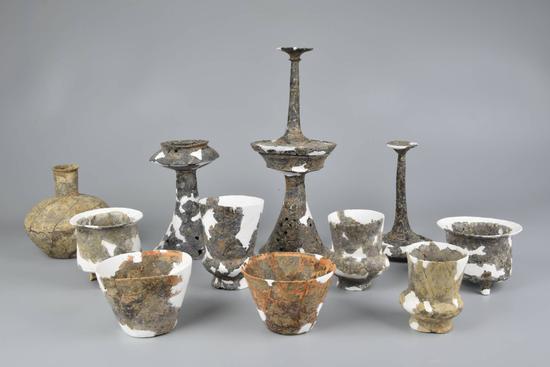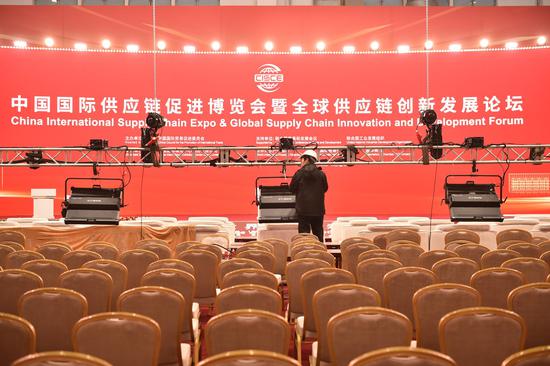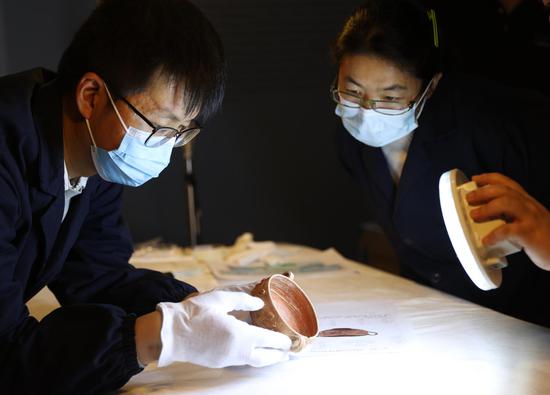About 20 ruins that were once possibly dams have been discovered at the Liangzhu Ruins in East China's Zhejiang Province. The finds are set to advance China's archaeological research on water conservancy systems, Chinese archaeologists said at a conference held by China's National Cultural Heritage Administration (NCHA) on Wednesday.
Wang Ningyuan, a research fellow at the Zhejiang Provincial Institute of Cultural Relics and Archaeology, said that with the support of the "Archaeology China" national project and the project to trace the origins of Chinese civilization, the recent findings have provided a preliminary understanding of the three development phases of the Liangzhu Ruins starting from scattered settlements, to the construction of a water conservancy system, and eventually the erection of a city.
He told the Global Times on Wednesday that the Liangzhu culture is generally divided into three periods: early, middle, and late. Analysis of excavated tombs and artifacts clearly indicates a transition in Liangzhu culture from centralized significant female power to subtle male influence.
"Early high-ranking tombs were predominantly for female occupants with dragon-shaped bracelets as accompanying items. In later excavations, male occupants were prevalent, and unearthed artifacts often featured carvings of divine beings and mythical creatures," he explained.
During the early stage of Liangzhu culture, investigations and excavations at sites like North Village and Nanwang Temple, as well as analysis of peripheral settlement structures like Yaoshan, have led to a new understanding of the distribution of Liangzhu settlement clusters.
During excavation of the North Village site, eight tombs for nobles were discovered, with jade artifacts constituting 95 percent of the site's findings. Among these, tomb M106 is the highest-ranking tomb for early Liangzhu females, yielding 72 burial items, including 66 jade artifacts. Notable items include coronets, jade pendants, dragon-shaped bracelets and conical objects, all made of nephrite jade.
Around 20 ruins suspected of being dams were discovered around Liangzhu ancient city, seven of which date back approximately 5,000 years, which means they were built around the same time as 11 previously discovered dams.
Wang highlighted the continuous focus on water conservancy systems in Liangzhu archaeology since the discovery of peripheral water conservancy systems in 2011. Recent discoveries, including the 20 suspected dams, complement the understanding of Liangzhu's middle-phase water conservancy systems and the layout of Liangzhu ancient city.
Emphasizing China's status as a water conservancy civilization, Wang noted that these structures are crucially linked to early settlement planning. Conducting specialized studies in this area holds significant importance for advancing China's archaeological research on water conservancy systems.
Media has reported that the Liangzhu Ruins have gained global recognition as a testimony to the existence of Chinese civilization at least 5,000 years ago. The conference also included noteworthy archaeological research outcomes from other sites, including research on the origin and diffusion of the Austronesian language family.
Zhou Zhenyu, a research fellow at the Institute of Archaeology, Chinese Academy of Social Sciences said that the study refined the archaeological cultural spatio-temporal framework of the southeastern coastal region of China.
This research reveals the evolutionary process of the prehistoric populations that deeply cultivated the site, developing ocean-related cultural characteristics. It serves as significant evidence for the complex evolution trends of Chinese civilization and the Chinese nation's "unity in diversity."
Zhou told the Global Times that although the Chinese mainland and the island of Taiwan do not have direct archaeological cooperation, there has been close academic exchanges over the past decade.
"Archaeological achievements in both regions mutually propel each other," he said, pointing out an example in which early agricultural and maritime findings from the Chinese mainland had spread to the island of Taiwan, undergoing a series of evolutionary changes. The Chinese mainland's archaeological achievements form the foundation for the Austronesian archaeological work on the island of Taiwan, while the island of Taiwan's archaeological outcomes contribute to refining the historical processes of Austronesian development in the later period.


















































 京公网安备 11010202009201号
京公网安备 11010202009201号